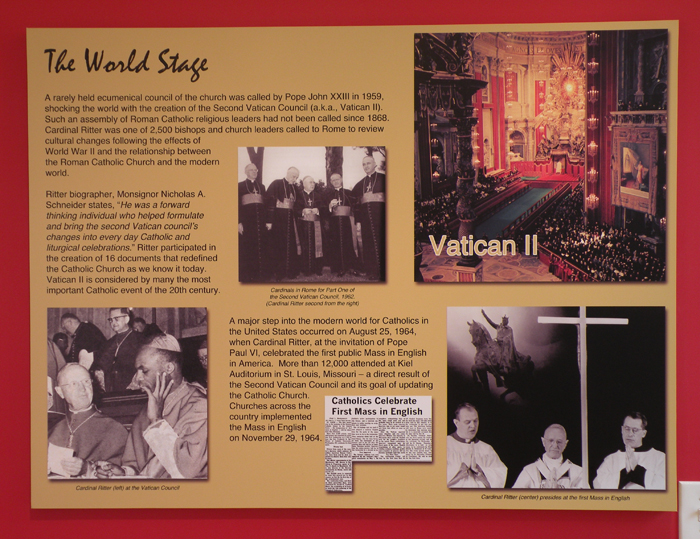During the course of assessing the derelict childhood home of Joseph Cardinal Ritter, it was decided the brick enclosed space immediately behind the main house should be preserved to house a small museum in his honor. Originally it housed the ovens and preparation room that served the family’s storefront bakery business. It was subsequently transformed to showcase the life of the Cardinal.
 The Cardinal Ritter Museum and Rose Garden were the last major structural projects on the original master plan. New Albany native Archbishop William E. Lori of Baltimore, MD, blessed and dedicated the Museum on July 17, 2013. Following the dedication ceremony, the Archbishop, who is also the Supreme Chaplain of the Knights of Columbus, was honored by the local Knights of Columbus Cardinal Ritter Counsel #1221 at their clubhouse on Main Street.
The Cardinal Ritter Museum and Rose Garden were the last major structural projects on the original master plan. New Albany native Archbishop William E. Lori of Baltimore, MD, blessed and dedicated the Museum on July 17, 2013. Following the dedication ceremony, the Archbishop, who is also the Supreme Chaplain of the Knights of Columbus, was honored by the local Knights of Columbus Cardinal Ritter Counsel #1221 at their clubhouse on Main Street.
See News and Tribune story – Push on for Ritter Museum, December 12, 2011
The Museum features four large panels designed to outline and highlight the Cardinal’s lifespan and legacy. A bronze bust of the Cardinal, created by local sculptor Guy Tedesco, sits atop a pedestal to greet visitors.
- The Early Years – From his 1892 birth in New Albany to his ordination to priesthood at St. Meinrad, in 1917.
- Emerging Years – His Indianapolis years from 1917 to 1946 where he became Bishop and Archbishop, and despite opposition from the KKK, managed to desegregate Catholic schools in both Indianapolis and Evansville dioceses’.
- Outreach and Reform – His St. Louis years from 1946 until his death in 1967, where against all odds, he desegregated the Catholic schools throughout the Archdiocese, strongly espoused ecumenisms and religious freedom, and was elevated to the rank of Cardinal by Saint Pope John XXIII.
- The World Stage – His “Cardinal” years 1961-1967 he attended the Second Vatican Council in Rome where he encouraged evaluating the relationship of the Roman Catholic Church and the modern world. His support of liturgical reforms led him celebrate the first official Mass in English for 12,000 Catholics in August 1964. Thanks to Cardinal Ritter, the transition became universal throughout the United States on November 29, 1964. (Photo below)
- A Landmark Reborn – This final panel tells the story, from 2001 to the present, of the restoration and expansion of the Cardinal Ritter House, Community Resource Center, and the Museum Room.
See BIRTHPLACE RESTORATION for complete story.

